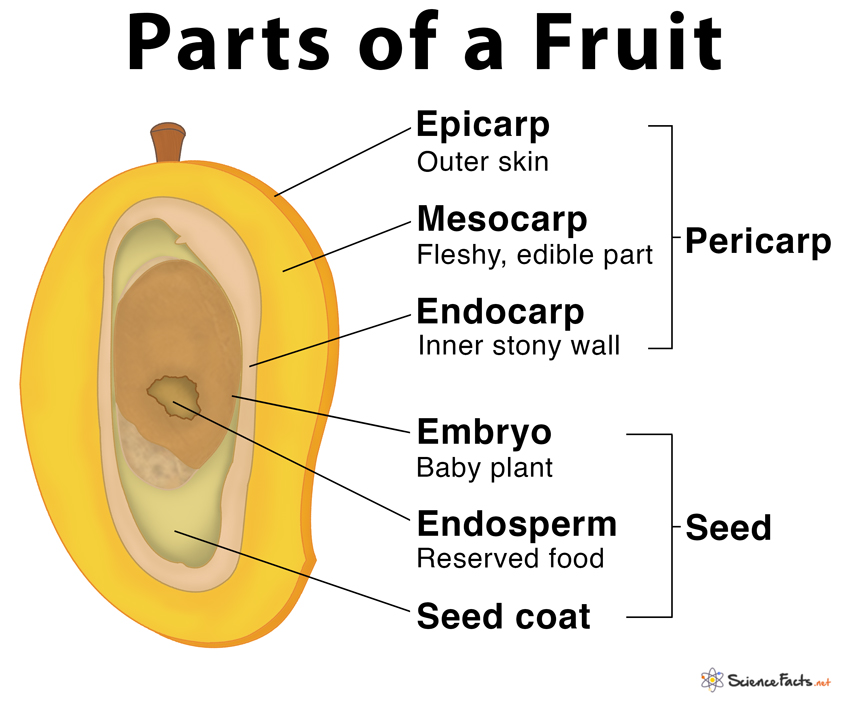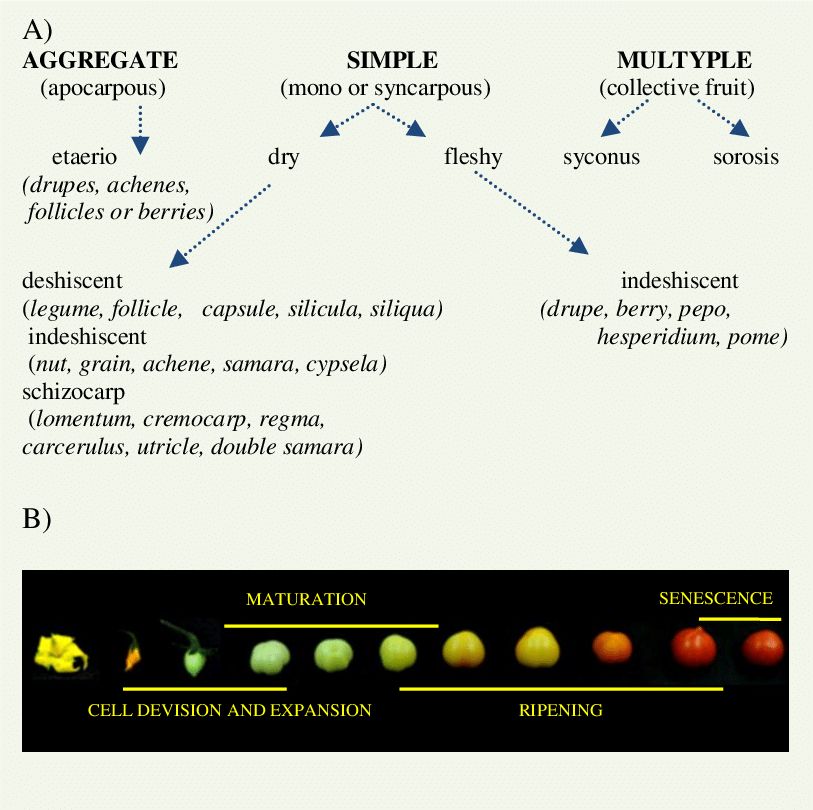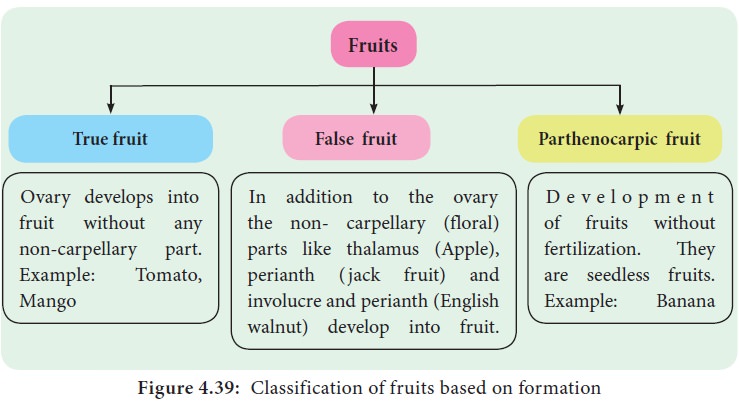The Fruit
Fruit is a seed-bearing structure generated from the ovary after flowering in flowering plants. Fruits are the vehicles via which flowering plants spread their seeds. Fruit is a distinguishing feature of flowering plants. A ripened that has matured following fertilization is the fruit.
A parthenocarpic fruit is one that is generated without the ovary being fertilized like a banana, cucumber, grape, orange. Etc. A wall or pericarp surrounds the seeds in most fruits. The pericarp might be meaty or dry. The outer epicarp, middle mesocarp, and inner endocarp are formed when the pericarp becomes thick and fleshy. The fruit is called a drupe in mango and coconut. They are single-seeded and develop from monocarpellary superior ovaries.The pericarp of mango is divided into three layers: an exterior thin epicarp, a middle fleshy edible mesocarp, and an inner stony hard endocarp. The mesocarp of coconut, which is also a drupe, is fibrous.

Fruits can be broadly classified into:

a. Simple Fruit: It is an indehiscent fruit derived from a single ovary having one or many seeds within a fleshy wall or pericarp: e.g. grape; tomato; cranberry.A simple fruit is further classified as dry or fleshy.
b. Aggregate fruit: Itdevelops from a flower having a polycarpellary apocarpous pistil. Each ovary develops into single simple fruit. Examples are blackberries and raspberries where each fleshy lobe is actually an individual fruit joined at their bases.
c. Multiple fruits: They are also called collective fruits. In this, the fruiting bodies are formed from a cluster of flowers, the inflorescence. Each flower in the inflorescence produces a fruit, but these mature into a single mass. After flowering, the mass is called an infructescence.Examples are, Pineapple and Mulberry.
Fruits are also classified on the basis of formation as True fruits, False fruits, and Parthenocarpic fruits.


 ACME SMART PUBLICATION
ACME SMART PUBLICATION
